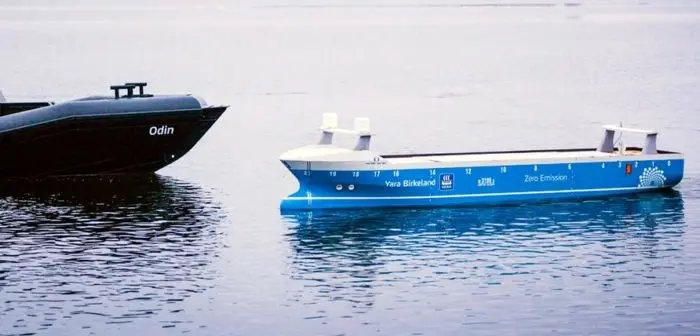Are electric vessels the future of shipping?
As the world is changing, technologies that were the absolute norm, are now becoming old-fashioned. Up until now, ships have been sailing using fuels. However, it seems that electric vessels are gaining momentum, with many countries considering them as the future.

As the world is changing, technologies that were the absolute norm, are now becoming old-fashioned. Up until now, ships have been sailing using fuels. However, it seems that electric vessels are gaining momentum, with many countries considering them as the future.
Electric vessels with energy storage in batteries and optimized power control can provide significant reductions in fuel consumption, maintenance and emissions.
A study by DNV GL shows how maritime batteries can contribute to achieving CO2-reduction targets. The study shows that reducing CO2 emissions in 2040 to below 2015 levels using green fuels will require the use of zero-emission options such as electricity and biofuels.
Additionally, in its latest Maritime Forecast to 2050, DNV GL believes that digital solutions could be vital to reducing shipping emissions. Namely, the report expects that the shipping GHG targets will be met. Carbon neutral fuels will play a crucial role, as by 2050, 39% of shipping energy will be provided from carbon-neutral fuels and 23% from LNG and LPG, a third of all ships will have electric batteries, thus contributing 5% of the market’s energy demand.
As for electricity in general, DNV GL notes that it will contribute even more to the global energy demand reduce from the mid-2030s onwards. Namely, global energy expenditure on energy, as a percentage of GDP, will decrease by 44% by 2050.
The good news is that electric propulsion is feasible for every kind of ship. From cruise ships to icebreakers, even war ships, as well as other marine applications, electric propulsion can improve operations in a sensitive environment.
This is what China also thinks. Speaking during a lunch that the Hong Kong Shipowners Association organised, Dr. Xie Xie, director of the Waterborne Transportation Research Institute at the Chinese Ministry of Transport, noted that the country considers LNG as a transitional fuel and believes that electric ships will define the future of shipping.
What is more, two recent reports Global Electric Ships Market Professional Survey Report 2018 and The Electric Ships Market research report, analyze the future of electric vessels until 2025.
The first report outlines the product price, specification, financial and technical details, and research methodologies to assist businesses expand their market operations.
The second report mainly presents the definition, types, applications and major players of electric ships market. As the report says, the main regions that will play a crucial role in the electric ships market are:
- North America;
- Europe;
- China;
- Japan;
- Middle East & Africa;
- India;
- South America.
In addition, The Electric Ships Market research report also mentions that the most important types of electric vessels will be:
- Battery Electric Ships;
- Plug-In Hybrid Electric Ships;
- Hybrid Electric Ships.
Currently, Norway is leading the attempts for an electric future in shipping. The electric revolution in the Norwegian maritime sector started about 3 years ago, when the first electric transfer ferry for the Norwegian Roads administration was launched, proven both a zero-emissions solution and also with respect to reduced operational costs.
In fact, Norway's first batch of 63 new ferries is now being produced. What is more, fishing boats, supply vessels, research ships, yachts, ans tugboats are also choosing electric propulsion instead of diesel-fueled combustion engines. These developments made Norway’s coast be called as Norway’s Silicon Valley.
Moreover, in December 2015, the Norwegian parliament also passed a law requiring low- and zero-emission solutions for all national and local ferries, providing also financial support. Now more than 60 electric ferries are in the plans and are about to be put into operation in the next 34 years.
Finally, the Norwegian Parliament adopted a resolution to reduce cruise ships and ferries emissions in the Norwegian fjords, no later than 2026. This regulation aims to make the fjords the world’s first zero emission zone at sea, while it will have a positive impact on transport, tourism, and the maritime industry.















![AIRBUS A380 [MORE THAN 600 PASSENGER’S CAPACITY PLANE]](https://cdn.tinn.ir/thumbnail/4jCp4EQvCU0b/IjHVrSYQrIAqIzXuTzADR7qLYX4idQT4nfq__26E5SCUPLMqfhWkWajvuO9Wfq1ql1TjV4dhkrHliNQU82kMpo2NNftT_NGEwHc9KXtN_rk731bmifa2IQ,,/airbus-a380-structure1.jpg)

Send Comment